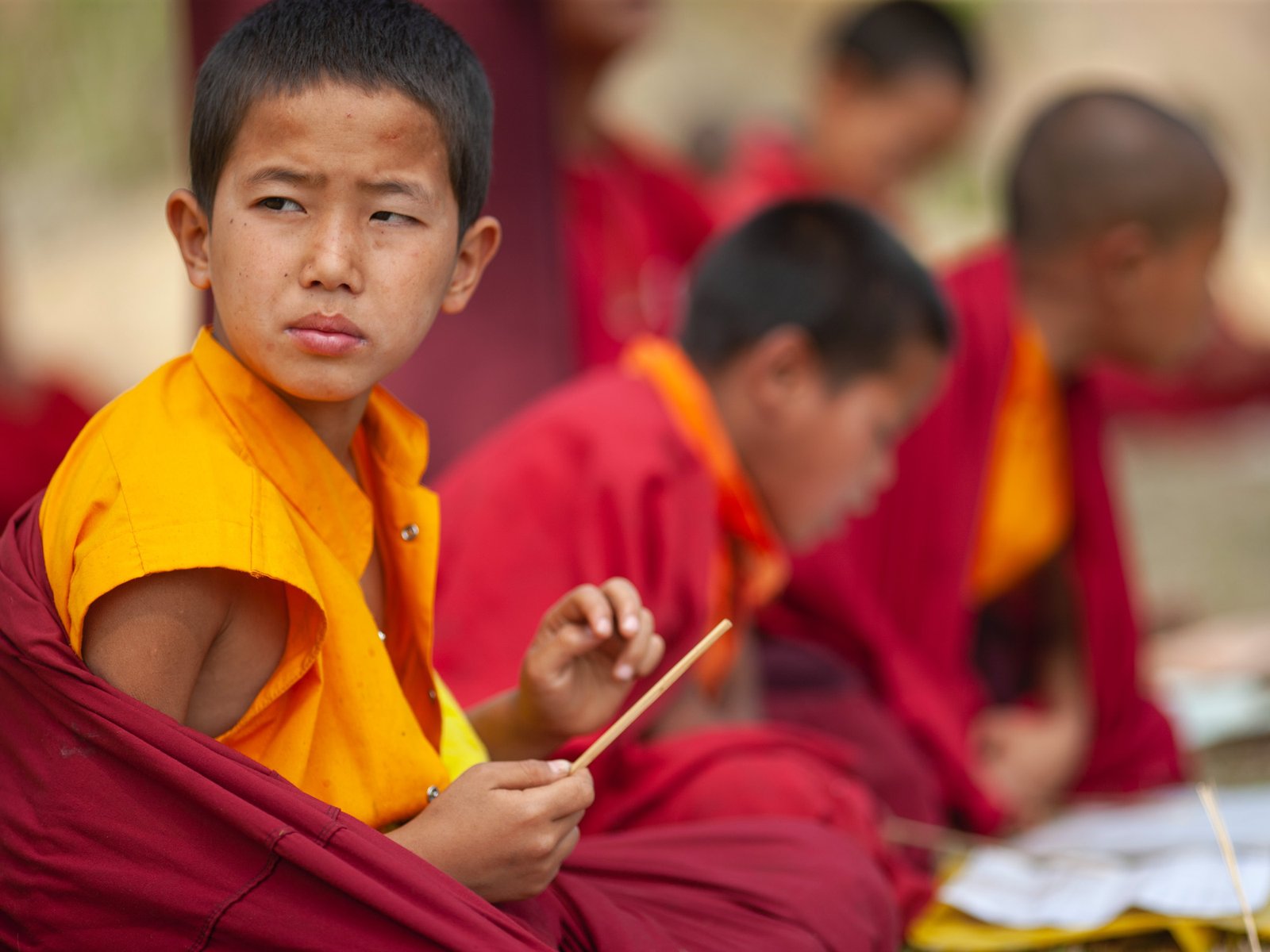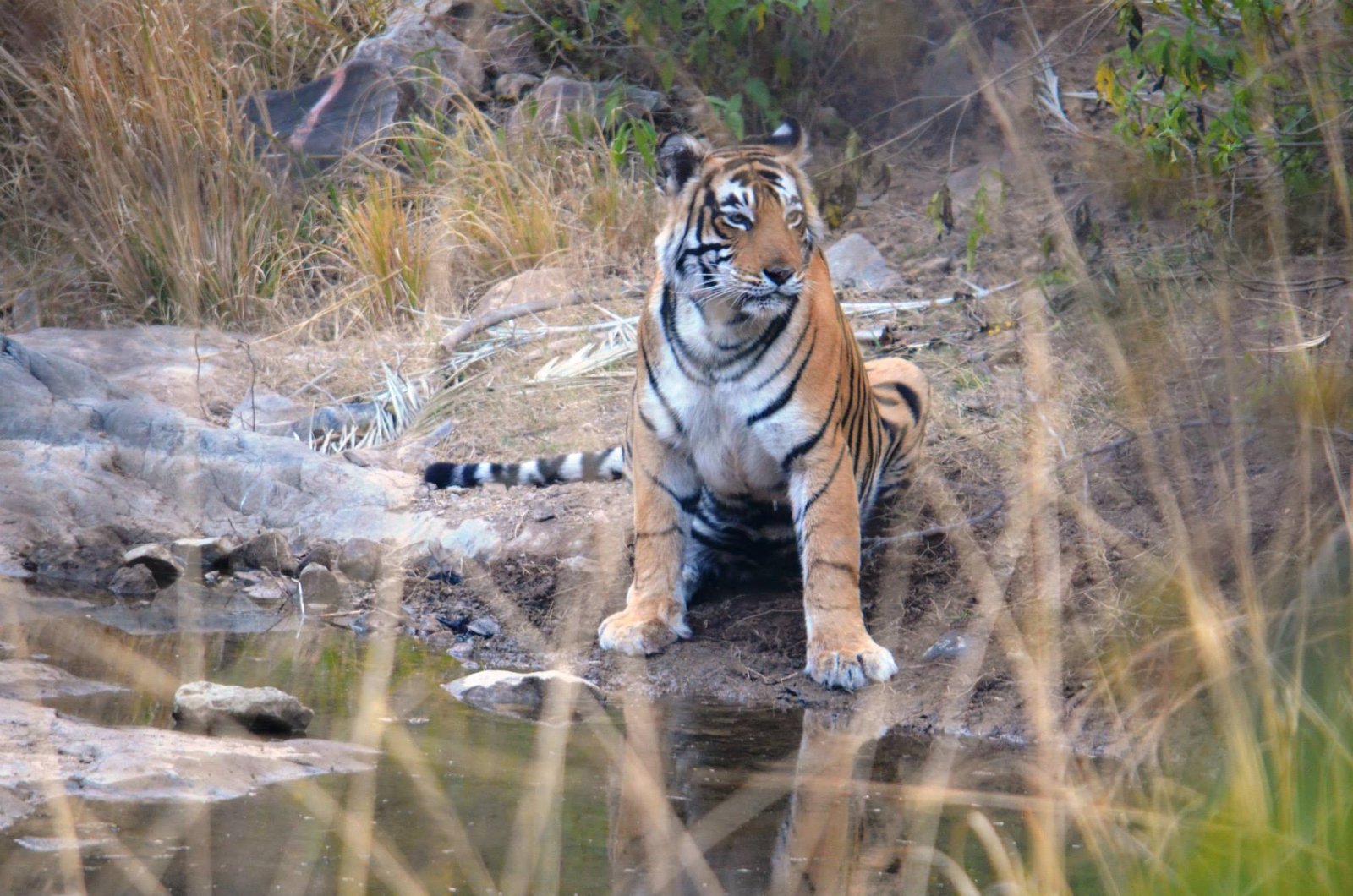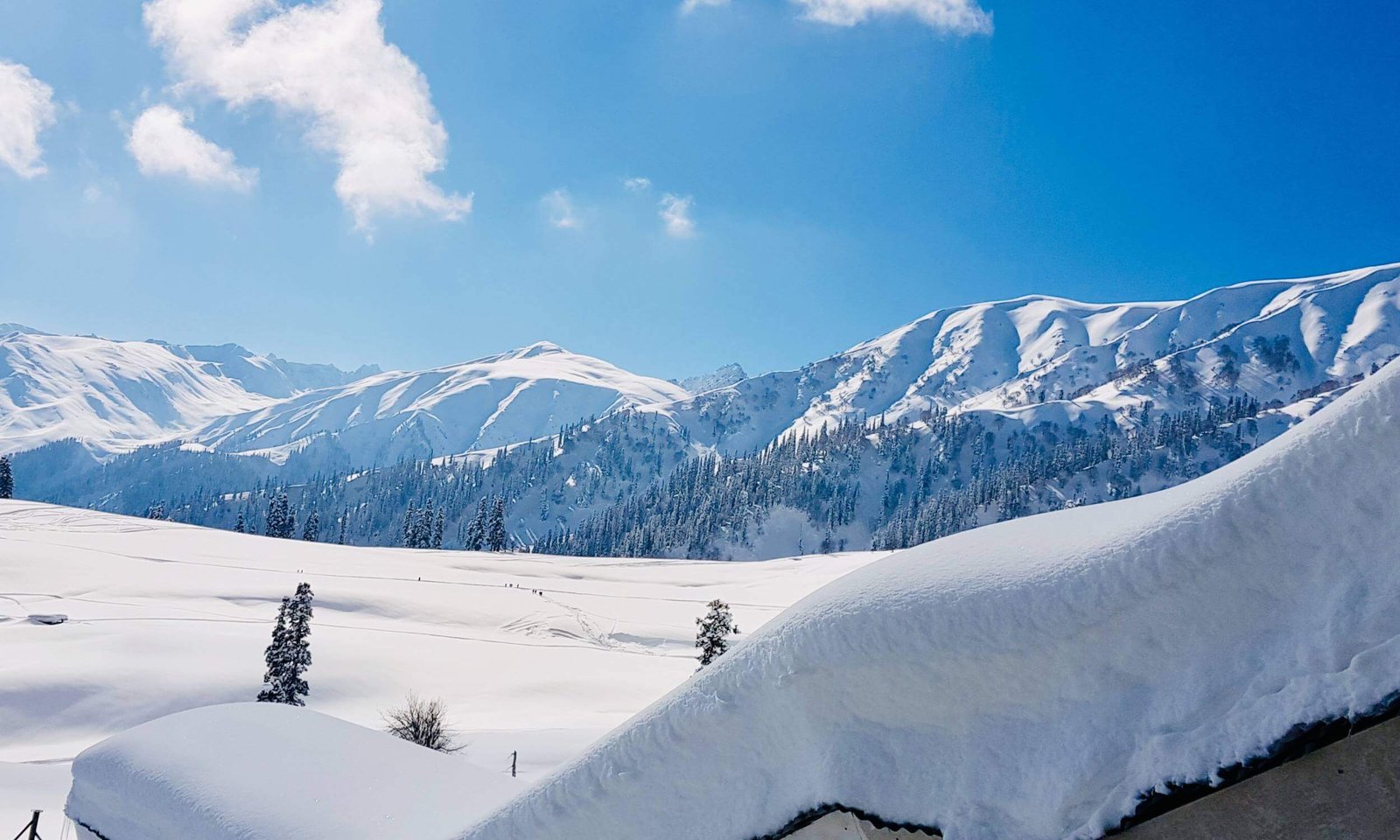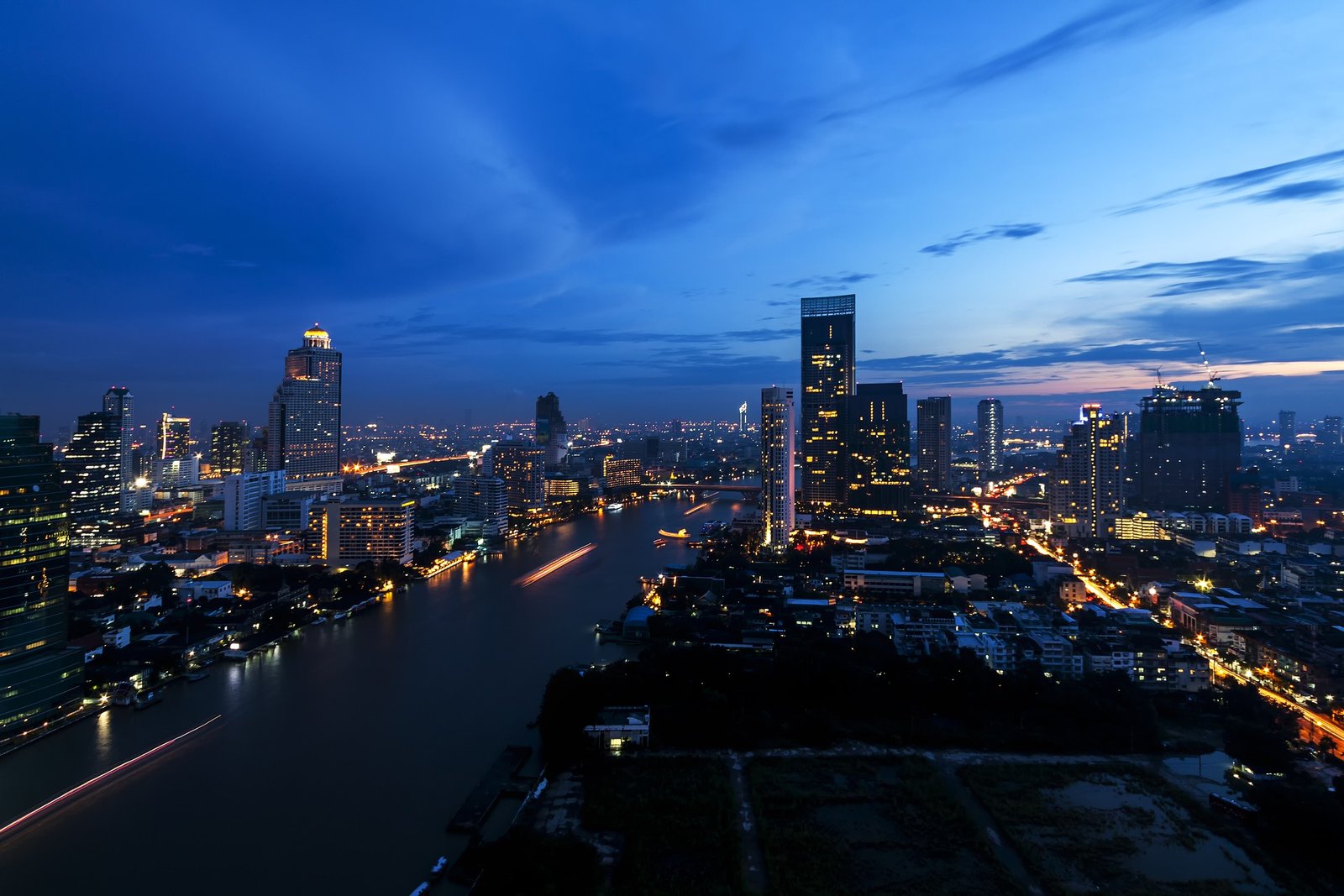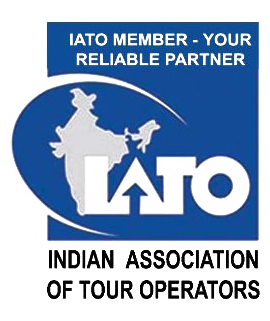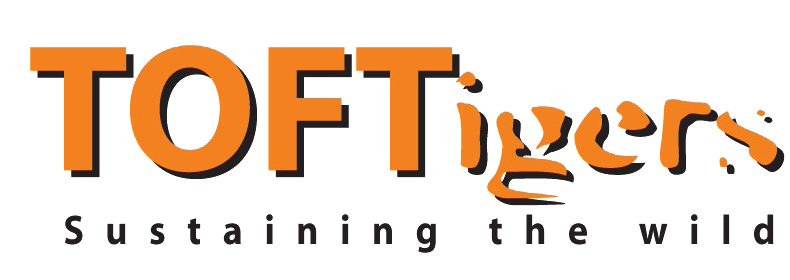The name “Bhutan” appears to be derived from the Sanskrit word “Bhotant” meaning “the end of Tibet” or from “Bhu-uttan” meaning “high land”. Though known as Bhutan to the outside world, the Bhutanese themselves refer to their country as Druk Yul or the Land of the Thunder Dragon. “Druk” meaning “Dragon” and extending from the predominant Drukpa school of Tibetan Buddhism.
The documented history of the Kingdom begins with 747 A.D. with Guru Padsambhava also known as Guru Rinpoche who made his legendary trip from Tibet across the mountains flying on a tigress’s back. He arrived in Paro valley at Taktsang Lhakhang also known as Tiger’s Nest. Guru Rinpoche is not only recognized as the founder of the Nyingmapa religious school but also considered to be the second Buddha.
In the ensuing centuries, many great masters preached the faith resulting in full bloom of Buddhism by the middle ages. Although sectarian at first, the country was eventually unified under Drukpa Kagyupa, sect of Mahayana Buddhism by saint/administrator Shabdrung Ngawang Namgyal in the 17th century. Ngawang Namgyal codified a comprehensive system of laws and built a chain of Dzongs which guarded each valley during unsettled times and now serving as the religious and administrative centre of the region. During the next two centuries civil wars intermittently broke out and the regional Governors became increasingly more powerful.
At the end of the 19th century, Trongsa Governor overcame all his rivals and soon afterwards recognized as the overall leader of Bhutan. The Governor of Trongsa, Sir Ugyen Wangchuck, was elected as the first King of Bhutan in 1907 by an assembly of representatives of the monastic community, civil servants and people. The country has now the system of democratic monarchy. The monarchy has thrived ever since and the present King, His Majesty Jigme Singye Wangchuck, the first King’s great grandson, commands the overwhelming support of his people. After assuming the throne in 1974, the present king continued his father’s policy of pragmatic development by actively pursuing industrial progress, country wide education and medical care and at the same time ensuring the country’s cultural and natural heritage intact.
Having always been politically independent, a rich and distinctive culture developed in the country over the ages. Perhaps the most important single factor in the molding of Bhutanese character and thought has been the teaching of Lord Buddha, whose eternal truths were first brought into the country from Tibet over the high, snow-bound mountain Passes by the great Indian saint, Guru Padsambhava.
In the Buddhist perspective, culture, tradition and beliefs and the environment are dynamic phenomena that are interwoven tightly in the web of life. As Buddhist philosophers say, “Culture lies not in objects or monuments but in the mind and compassion towards all sentient beings”. Bhutan’s unique cultural and traditional values, highly valued in themselves by all the population, are the essential embodiments of the nation’s identity. For a small country located between two most populated countries of the world, India and China, the preservation and promotion of its distinct cultural identity is seen as an important means for its survival as an independent and sovereign Kingdom. It was this identity that has protected and sustained Bhutan and also provided the foundation for its major policies.
Discover Bhutan’s spectacular sights and intriguing culture on this journey to serene monasteries, ancient dzongs, isolated farms and hamlets. Bhutan is a Buddhist kingdom on the Himalayas’ eastern edge, is a land of monasteries, fortresses (or dzongs) and dramatic topography ranging from subtropical plains to steep mountains and valleys. Come and explore the unexplored with us.
Nowhere in the Himalayas is the natural heritage more rich and varied than in Bhutan. In historical records, the Kingdom was called the ‘Valley of Medicinal Herbs’, a name that still applies to this day. About 72.5 percent of the country’s area is under forest cover.
For centuries, Bhutanese have treasured the natural environment and have looked upon it as the source of all life. This traditional reverence for nature has delivered Bhutan into the 20th century with an environment still richly intact. The country wishes to continue living in harmony with nature and to pass on this rich heritage to its future generations.
Fortunately for Bhutan, maintaining a balanced natural ecosystem remains the central theme of its development process. The country’s development policies disregard sacrificing its natural resource base for short term economic gains and are consistent with the central tenets of sustainable development, environmental conservation and cultural values. In 1998, Bhutan was identified by Norman Myers as one of the ten biodiversity hot spots in the world.
It has been identified as the centre of 221 global endemic bird areas. The country signed the Convention on Biological Diversity and United Nations Framework Convention on Climate Change in Rio de Janeiro in 1992. These conventions were ratified in 1995 at the 73rd session of the National Assembly. The Royal Government of Bhutan has also made a national commitment to uphold its obligation to future generations by charting a path of development called the ‘Middle Path’ this is the development which upholds both environmental and cultural preservation as an integral part of the development process.
Tourist Information
Key Facts
Capital: Thimphu
Area: 38,394 sq kms
Population: 691,141
Languages: Dzongkha
Time: BTT (UTC+6:00)
Currency: Ngultrum (Nu.)
Climate
Bhutan’s climate is as varied as its altitudes and, like most of Asia, is affected by monsoons. Western Bhutan is particularly affected by monsoons that bring between 60 and 90 percent of the region’s rainfall. The climate is humid and subtropical in the southern plains and foothills, temperate in the inner Himalayan valleys of the southern and central regions, and cold in the north, with year-round snow on the main Himalayan summits.
Temperatures vary according to elevation. Temperatures in Thimphu, located at 2,200 meters (7,218 ft) above sea level in west-central Bhutan, range from approximately 15 to 26 °C (59 to 78.8 °F) during the monsoon season of June through September but drop to between about -4 and 16 °C (24.8 and 60.8 °F) in January. Most of the central portion of the country experiences a cool, temperate climate year-round. In the south, a hot, humid climate helps maintain a fairly even temperature range of between 15 and 30 °C (59 and 86 °F) year-round, although temperatures sometimes reach 40 °C (104 °F) in the valleys during the summer.
Annual precipitation ranges widely in various parts of the country. In the severe climate of the north, there is only about 40 millimeters (1.6 in) of annual precipitation—primarily snow. In the temperate central regions, a yearly average of around 1,000 millimeters (39.4 in) is more common, and 7,800 millimeters (307.1 in) per year has been registered at some locations in the humid, subtropical south, ensuring the thick tropical forest, or savanna. Thimphu experiences dry winter months (December through February) and almost no precipitation until March, when rainfall averages 20 millimeters (0.79 in) a month and increases steadily thereafter to a high of 220 millimeters (8.7 in) in August for a total annual rainfall of nearly 650 millimeters (25.6 in).
Bhutan’s generally dry spring starts in early March and lasts until mid-April. Summer weather commences in mid-April with occasional showers and continues through the premonsoon rains of late June. The summer monsoon lasts from late June through late September with heavy rains from the southwest. The monsoon weather, blocked from its northward progress by the Himalayas, brings heavy rains, high humidity, flash floods and landslides, and numerous misty, overcast days. Autumn, from late September or early October to late November, follows the rainy season. It is characterized by bright, sunny days and some early snowfalls at higher elevations. From late November until March, winter sets in, with frost throughout much of the country and snowfall common above elevations of 3,000 meters (9,843 ft). The winter northeast monsoon brings gale-force winds down through high mountain passes, giving Bhutan its name—Drukyul, which in the Dzongkha language mean Land of the Thunder Dragon.
VISA Information
All visitors to Bhutan must have a visa approved prior to arriving in the kingdom. Those who have not had a visa approved will not be permitted to Bhutan.
- Passport Validity – ( validity should be for Six (6) or more month to expiry)
- 2 original passport – size photographs.
- $ 20.00 USD cash ( for two weeks visa only)
- Clients travelling with us on a BHUTAN package the visa will be arranged by us upon arrival. We would require a Scanned copy of the passport.
Note: The above is only for information purpose. Visa requirement might be changed by the concerned embassy, hence kindly visit the embassy website or speak to the concerned authority before applying for the visa.
ROYAL BHUTANESE EMBASSY IN INDIA
Chandragupta Marg,
Chanakyapuri,
New Delhi – 110 021, India.
Tel: ( 11 ) 2688 9230 or 9806/7.
Bhutan Tourism Corporation Limited ( BTCL )
PO Box 159, Thimphu, Bhutan
Tel: (2) 324 045 or 322 647.
Website: www.kingdomofbhutan.com
Local Laws & Customs
Personal computers, cellular telephones, cameras, or any other electronic device must be registered with Bhutanese customs upon arrival. These items will also be checked upon departure. The export of all antiques is strictly monitored.
Penalties for possession, use, or trafficking of illegal drugs are strict. Convicted offenders can expect long jail sentences and heavy fines.
It is illegal to sell tobacco. Offenders will be charged with smuggling and can expect to be fined. Imported tobacco products demonstrably for personal use are subject to a 100 percent tax.
Currency
Bhutanese currency is the ngultrum (nu). The approximate exchange rate is 45.00 nu for one US dollar (this will vary 1 or 2 nu, plus or minus) The ngultrum is on par with the Indian Rupee (both the Nu and Indian Rupee can be used in Bhutan). US Dollars and other world currencies as well as traveler’s cheques can be exchanged at banks in the larger towns (hours 10:00 am to 1:00 pm, Mon to Fri) and at the larger hotels. In the capital town of Thimphu some of the smaller bank branches are open Saturday and Sunday for currency exchange. Ngultrum or rupees will be what you will need for your purchases while in the more rural towns and villages.
Customs Authority
The Bhutanese authorities strictly monitor the export of any religious antiquities or antiques of any kind from the Kingdom (100 years or older). Visitors are advised to be cautious in purchasing old and used items. Custom authorities will not allow items to be taken out of the country if they have not been officially certified as non-antique. Personal videos, cameras, personal computers, portable telephones or any other electronic device should be registered with the customs authorities on arrival at Paro and will be checked by the same on departure. Upon arrival you will be issued a “customs form” this form must be filled out, with declarations, and returned to authorities before leaving the kingdom. Import of plants, soils, etc., are subject to quarantine regulations. These items must be declared on arrival.
Food
Spicy chilies (ema) mixed with a cheese sauce called emadatse is the national dish of Bhutan. Chilies are treated as a vegetable rather than a seasoning in the Bhutanese diet. A wide variety of fresh vegetables are a daily staple of the Bhutanese diet. Red and or white rice is served at all meals. Meats, poultry and fish (usually in the form of stews) are also found on many Bhutanese menus along with Tibetan momos and noodle dishes. Bhutan’s professional chefs temper their natural tendency to over spice dishes by preparing food more suitable to western taste ranging from Continental to Chinese and Bhutanese to Tibetan and Indian.
Accommodations
Bhutan Tourism Corporation Ltd. owned hotels are one of the several delightful surprises visitors can expect in the Kingdom. The company operates hotels throughout Bhutan ensuring its guests a consistent style and comfort level throughout their stay. Each property is designed in the traditional Bhutanese style, yet each retains its own character and each is set in unusual and dramatic locations.
From the Hotel Olathang in the foothills of the Paro Valley surrounded by blue pine forests to the Hotel Motithang (Bhutan’s first hotel) overlooking Thimphu’s skyline to Trongsa’s Sherubling Lodge, with its alpine feel and remarkable vista over the golden roofs of Trongsa Dzong. A restaurant serving traditional Bhutanese cuisine tempered to western tastes can be found in all of the hotels. Many of the hotel chefs have been trained at hotel schools in Europe and are very comfortable preparing food to please the western palate. Meals are usually served in buffet style.
Hotel rooms are all decorated in a traditional Bhutanese style; many are quite reminiscent of mountain lodges. The rooms are cozy and well-heated during the winter. Bathrooms are clean and western in style with running hot water.
Most of the hotels and guest lodges are now equipped with international direct dial telephones and fax machines. International Direct Dial calls can be made to or from Bhutan to anywhere in the world. Cell phones as of yet are not operable in Bhutan. Hotels not owned and operated by BTCL can also be arranged on request.
Archery
Archery is the much loved national sport of Bhutan. Each village has its own archery range, and it is impossible to imagine any festival taking place without a high-spirited competition. Contests take place year round. The distance between the two targets is about 120 meters. The targets are made of wood splashed with colorful patterns. Inter-village rivalry is common throughout the kingdom and this rivalry is no more fiercely expressed than during annual archery tournaments. They are generally held during Losar (Bhutanese New Year coinciding with February or March of the calender) but smaller competitions are held throughout the year.
The tournament’s excitement begins the night before the contest. Teams employ astrologers to assist in the selection process and to cast spells on the opposition. Each team spends the night prior to the match together in an age-old tradition of sleeping in the barn or the forest, depending on the outcome of the astrologers calculations. Apart from improving team spirit, it is thought that a man should not spend the night before the tournament with his wife as his concentration may begin to waiver the following day. The tournament itself begins with initiation ceremonies and a traditional breakfast. Alcohol flows from early in the day and spirits are always high. As the day passes and the alcohol takes effect, the party becomes more and more raucous. Opponents whisper obscenities into their adversaries’ ears and dance diversionary dances in front of the target. Women from each village participate in the fun by singing for their team and jeering at the opposing team.
Transportation
Mode of transportation within Bhutan is by motor vehicles only. There are no domestic airlines or trains. However the main roads are well maintained. The main highway highway runs from west to east connecting all the major towns. The mountainous terrain and winding roads restrict the average speed of vehicles to less than 40 km.hr. During monsoon and winter months, wheather can disrupt travel and unexpected changes might occur in itineraries. Every effort will be made to stay as close to original travel itinerary as possible. For visitors wishing to enter Bhutan by road. The only land entry point is though the southern boarder town of Phuentsholing. Boardering West Bengal India. All visa and custom regulations apply.

